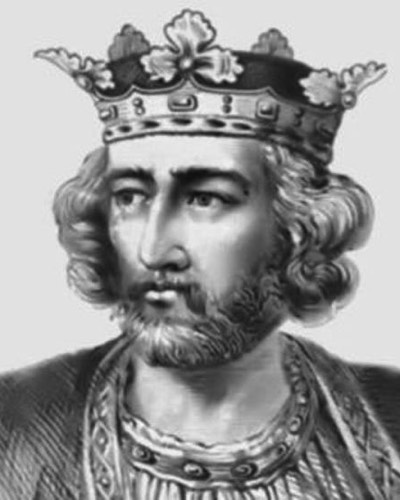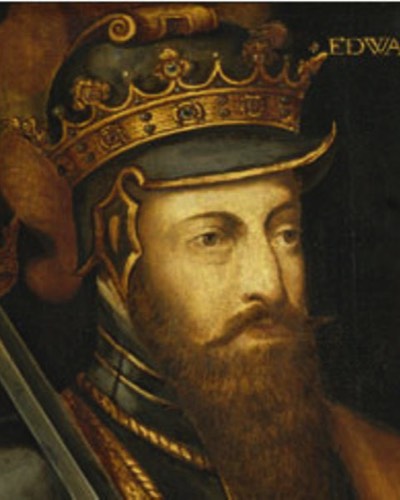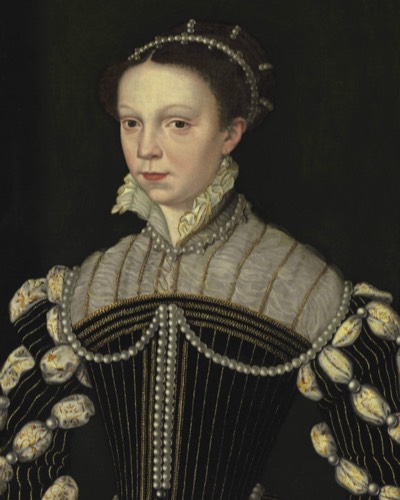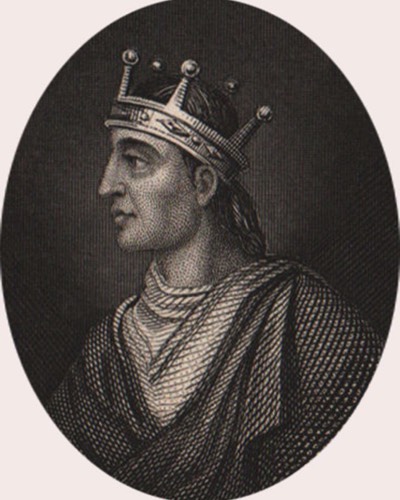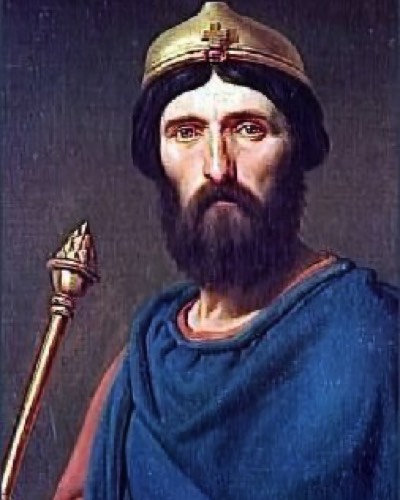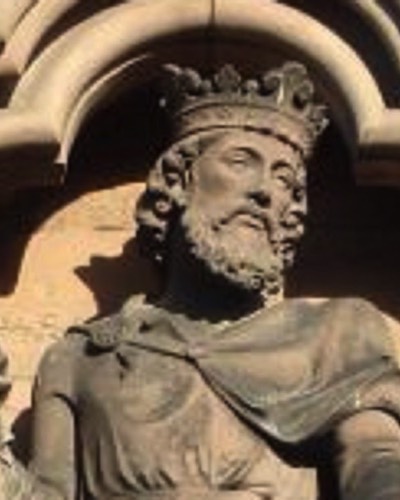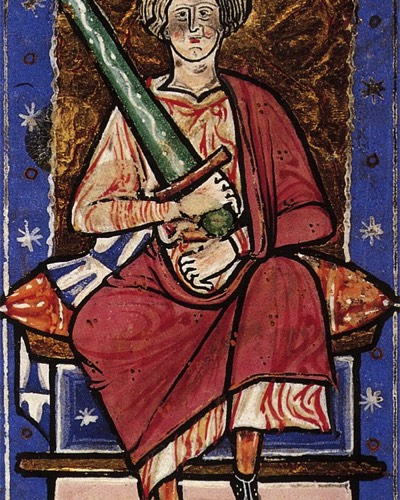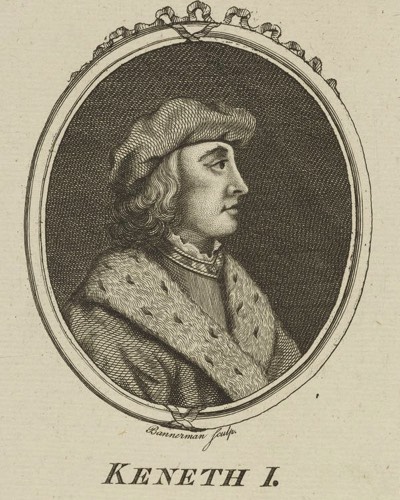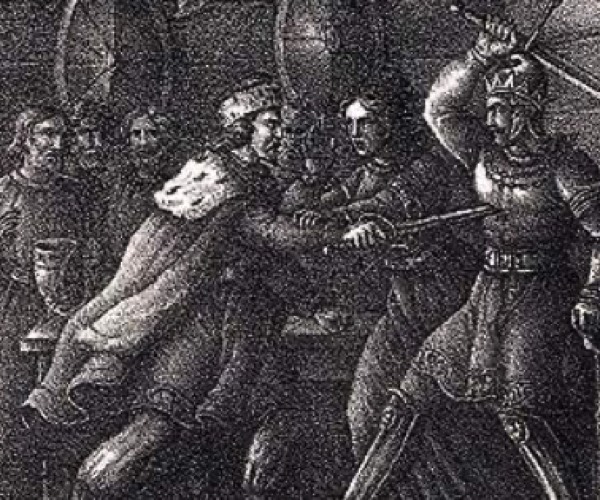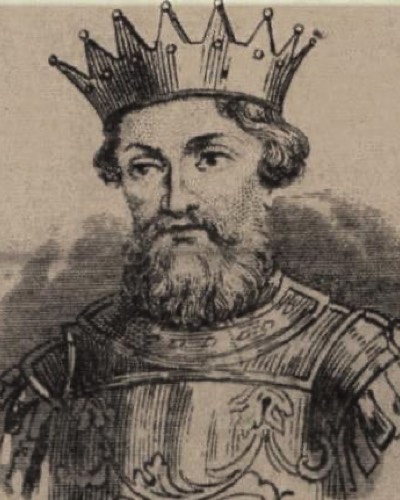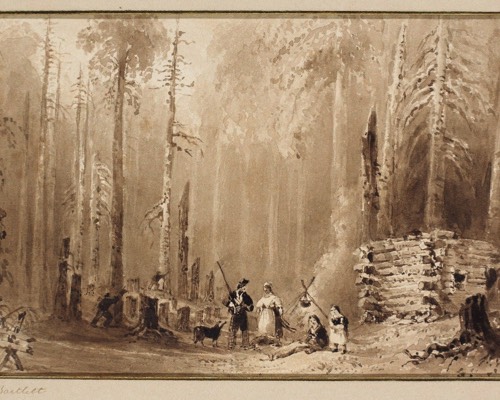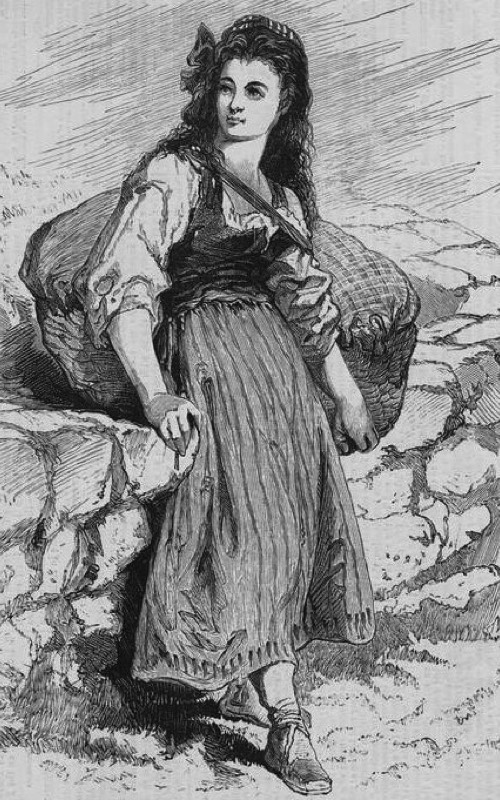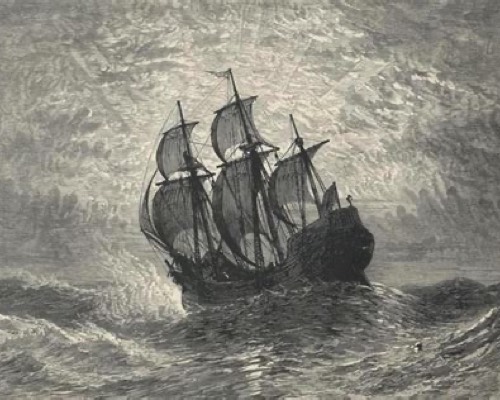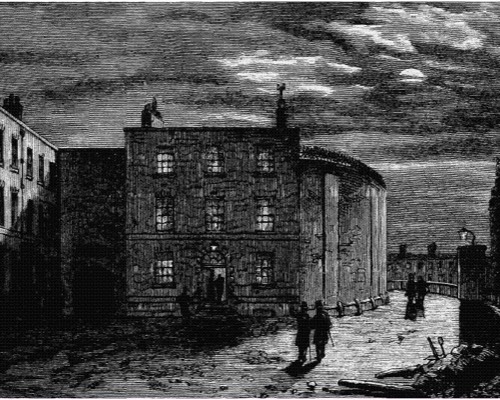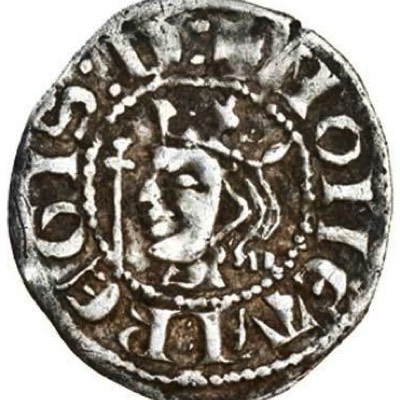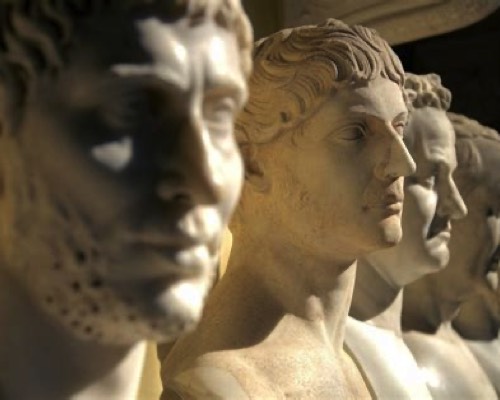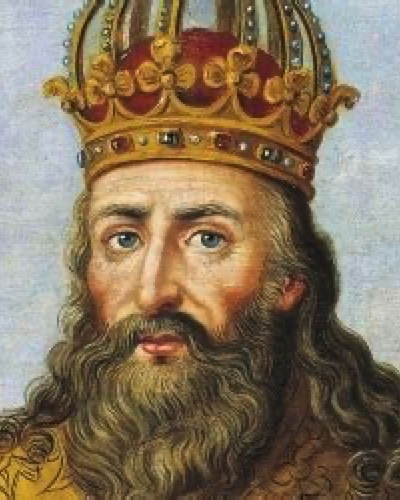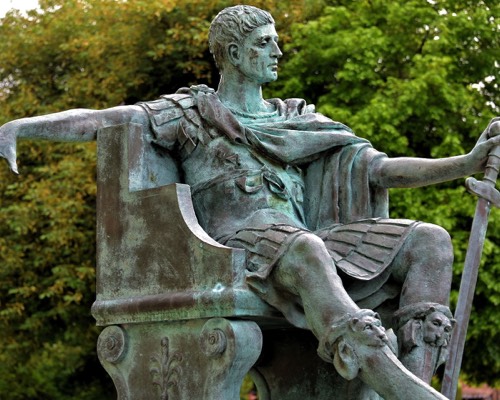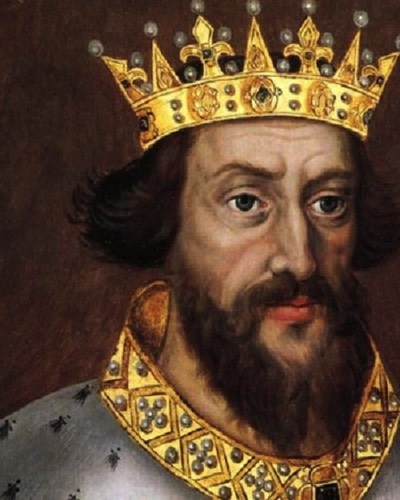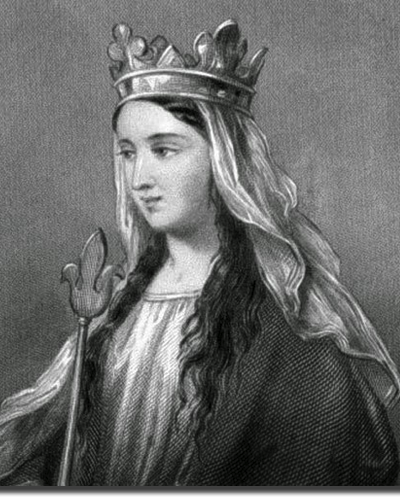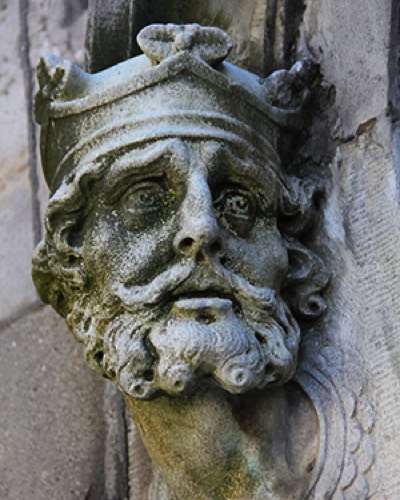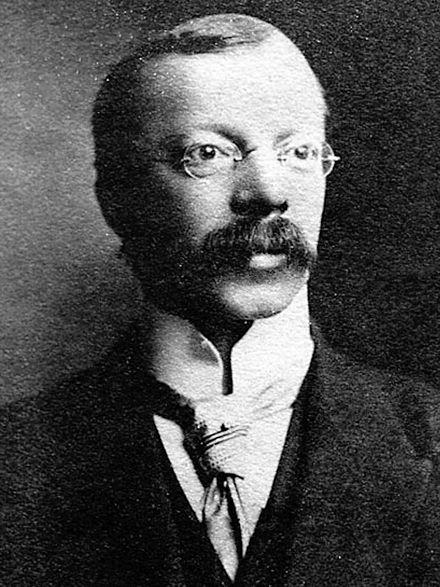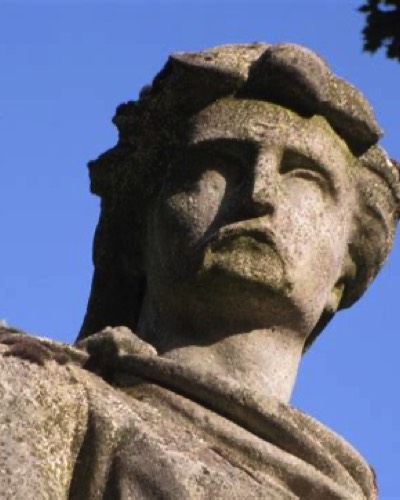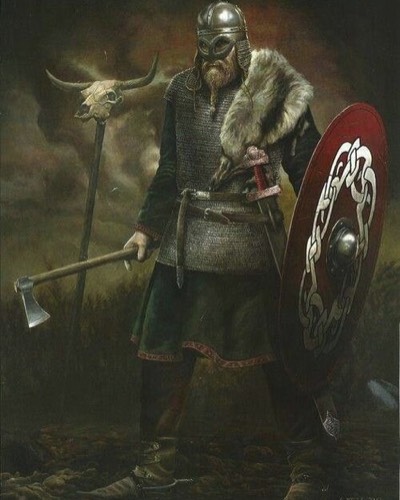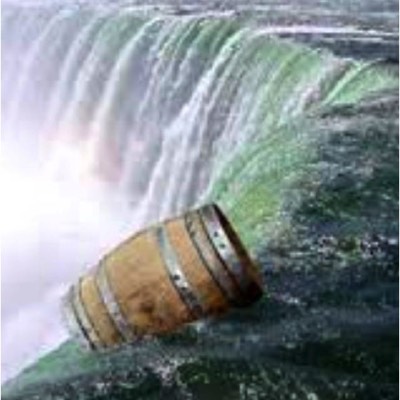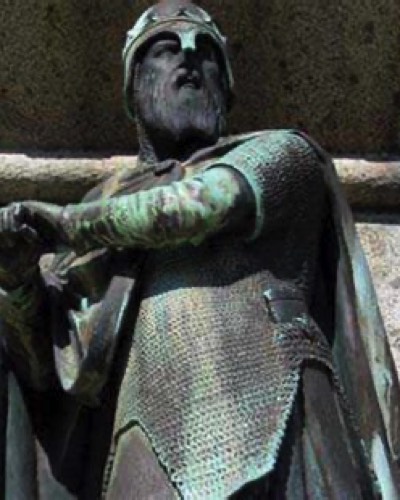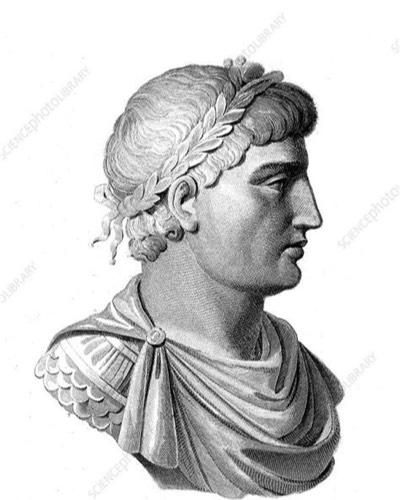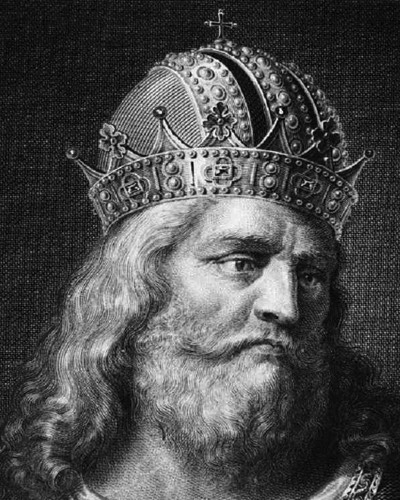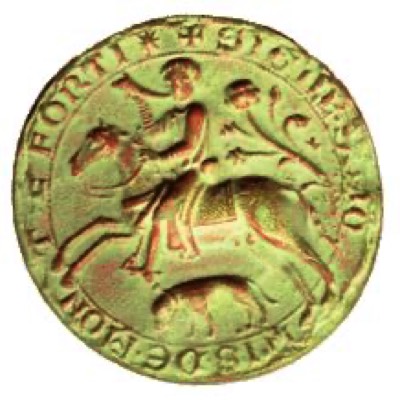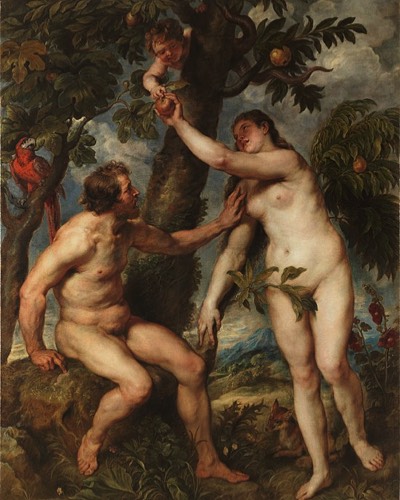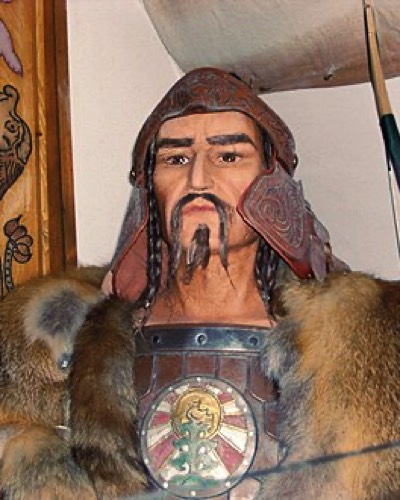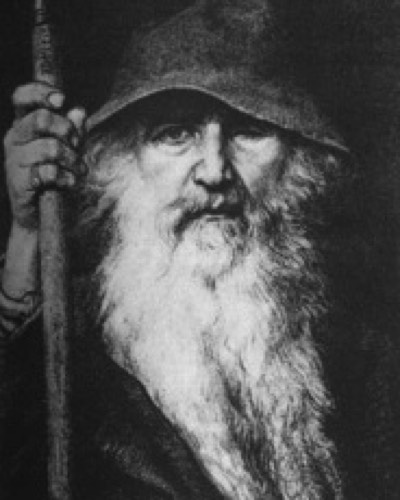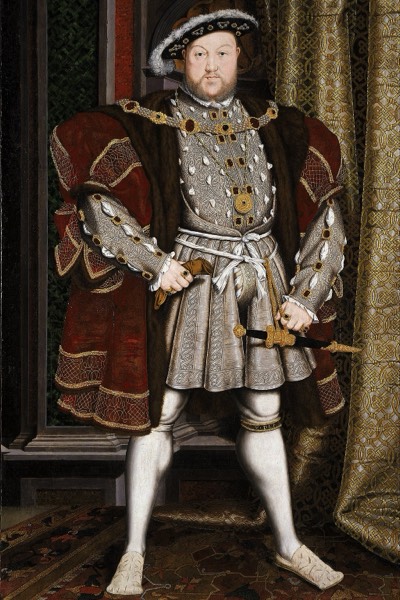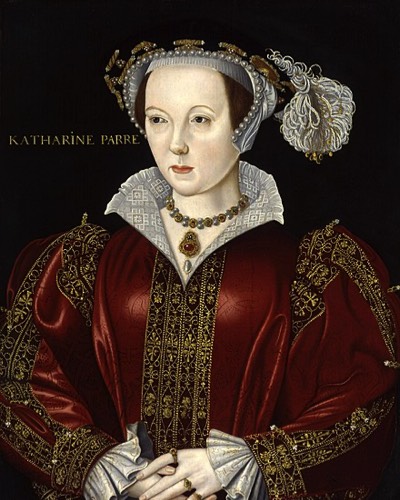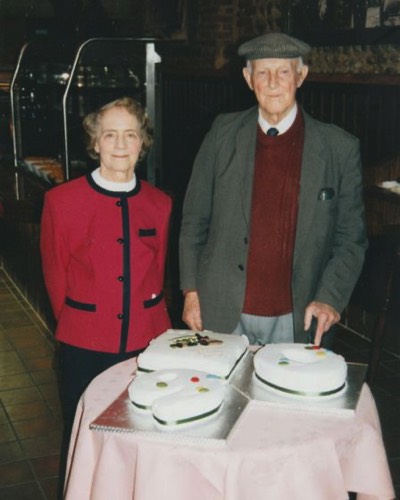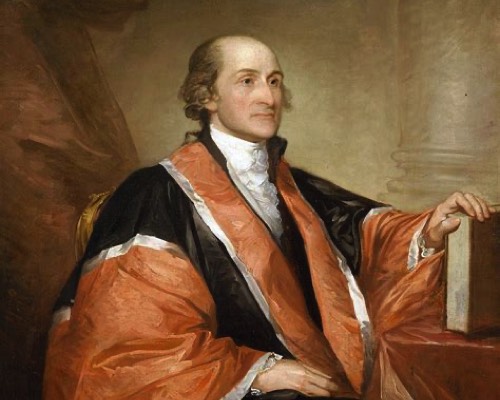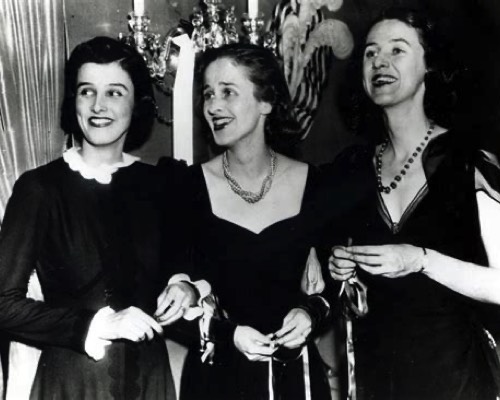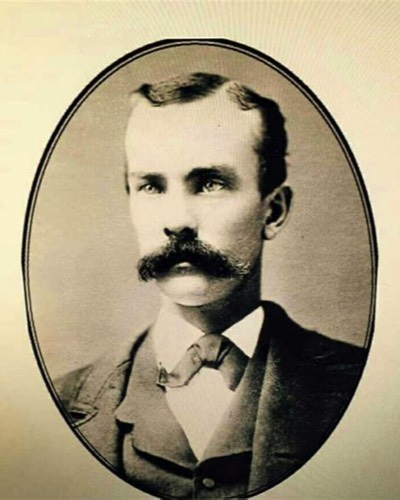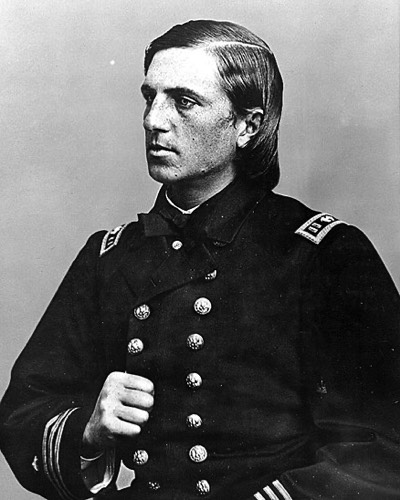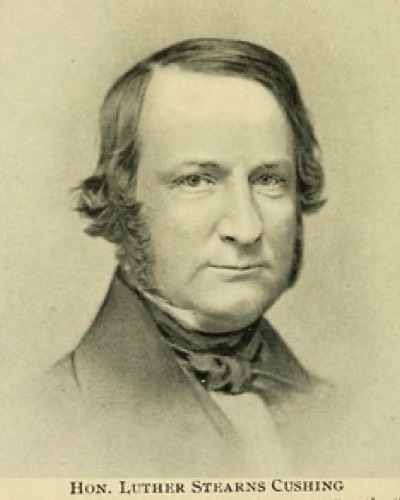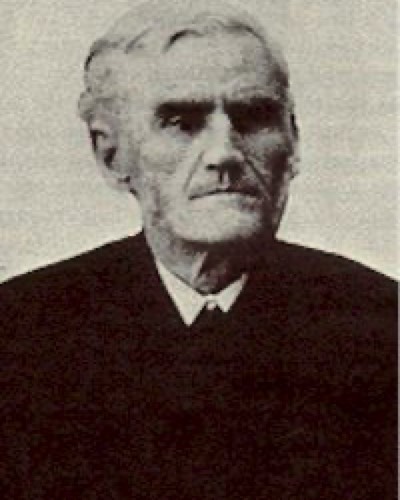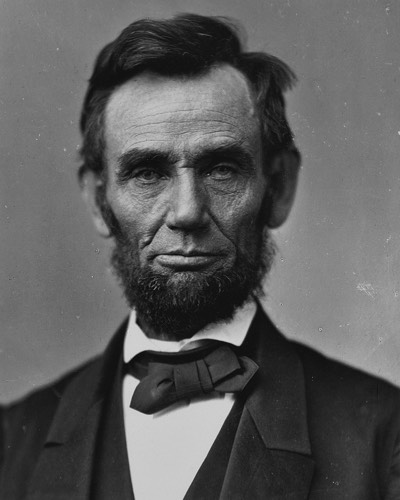All of my own direct line ancestors/descendants have CAPITALS for their first names so if you link to one of them you will find navigation easy. Dates before 1500 are usually approximate as births and deaths were often not registered only names of children. I have used Wills, graves, encyclopaedia references, books and web sources such as Wikipedia and have only recorded on this tree plausible dates, the web is unfortunately full of impossible records! Names can also be an issue as Latin was used in Parish Registers.
CU01 Direct MALE Cushing line

CU01 follows the direct male Cushing line. Dates before 1500 are usually approximate as births and deaths were often not registered only names of children. I have used Wills, graves, encyclopaedia references, books and web sources such as Wikipedia and have only recorded on this tree plausible dates, the web is unfortunately full of impossible records!
HP01 House of PLANTAGENET Kings and Queens of England (1154 - 1485)
On the direct Cushing ancestor heritage line HP01 leads to all the House of Plantagenet Kings and Queens of England. Follow the direct line via capital first names to THOMAS then follow his wife URSULA b1490 and the code HP01. Dates before 1500 are usually approximate as births and deaths were often not registered only names of children. I have used Wills, graves, encyclopaedia references, books and web sources such as Wikipedia and have only recorded on this tree plausible dates, the web is unfortunately full of impossible records!
RF01 KINGS of the English (0874-1016)
RF01 family line for all the early Kings of the English from follow CU01 to CHRISTINA Atheling then RF01 Dates before 1500 are usually approximate as births and deaths were often not registered only names of children. I have used Wills, graves, encyclopaedia references, books and web sources such as Wikipedia and have only recorded on this tree plausible dates, the web is unfortunately full of impossible records!
KQ01 KINGS AND QUEENS OF SCOTLAND (0660 - 0838)
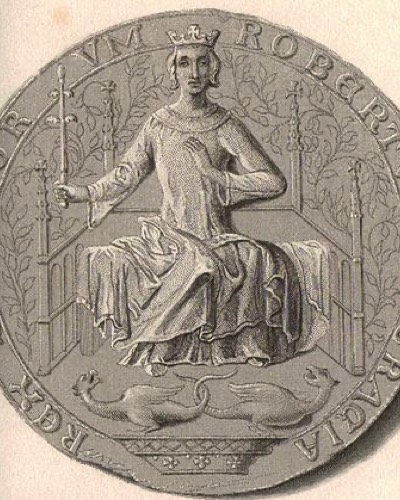
RS02 Robert II King of Scotland
Robert II (2 March 1316 – 19 April 1390) was King of Scots from 1371 to his death in 1390. The son of Walter Stewart, 6th High Steward of Scotland, and Marjorie, daughter of King Robert the Bruce, he was the first monarch of the House of Stewart. Upon the death of his uncle David II, Robert succeeded to the throne.
KQ01 Leads to the Kings and Queens of Scotland from the path GH01 at DAVID Hume b1520
The Early Years
Following the final withdrawal of the Romans from Scotland in the 4th century, there were a number of tribal groupings whose boundaries changed over the centuries. In the north, the Picts covered the Highlands and parts of the Lowlands as far as Angus, Fife and Stirling. Although little is known of the Picts and apart from late lists of kings written in Latin, they left no written record. The earliest king who is more than just a name on a list is Bridei in the 6th century who was a son of the Welsh king Maelcon. Bridei won a victory over Gabran, the most powerful of the Scots in Dalriada which was roughly where Argyllshire is now. Bridei was the first Pictish king to show an interest in Christianity and he met St Columba at his power base near Inverness.South of the Picts and Scots was the kingdom of Strathclyde, centred on Dumbarton Rock. To the east, in Lothian and around present day Edinburgh were the Gododdin, who spoke a form of early Welsh language. They were eventually overwhelmed by the Nothumbrians. In the south-west was the kingdom of Rheged on both sides of the Solway Firth.
KENNETH mac Alpin 0810 was the first king to unite the kingdoms of Dalriada in the west and the Picts and as such is regarded as the first king of Scotland.
Kenneth I (843-858) Kenneth mac Alpin or Kenneth, son of Alpin, was 35th king of Dalriada. By inheritance (his grandmother was a Pict) and by conquest, he also became king of the Picts in 843 and by 858 ruled as far as the river Tweed (near the current English border). One of his daughters married the King of Strathclyde and their son became King Eochaid (below). On his death in 858, Kenneth's brother became King Donald I and his cousins later became Kings Constantine I and King Aed.
Donald I (858-862) Also a son of Alpin, Donald was described at the time as "the wanton son of the foreign woman". He extended Dalriadic law into Pictland and died of natural causes near Scone, Perthshire.
Constantine I (862-878) Possibly a son of King Kenneth I, Constantine faced a number of Viking invasions and was killed in a battle fighting the Danes.
AEDH (878-879) Another son of Kenneth I and brother of Constantine I, he was killed by Giric, a son of Donald I.
Eochaid (879-889) Grandson of Kenneth I, whose daughter married Run, King of Strathclyde and gave birth to Eochaid, thus eventually extending further the kingdom of Alba. He was deposed shortly before his death.
Donald II (889-900) Donald II was the first monarch to be called "Ri Albain" or "King of Scotland" despite the fact that much of northern Scotland as far as Moray was held by the Norse Earl Sigurd from Orkney. Donald was a son of Constantine I and was described as rough and cunning. He was killed by men from the Mearns near Dunottar and, like most of the early kings of Scotland, was buried on Iona.
Constantine II (900-942) Son of Aedh. After an unsuccessful invasion of Northumbria, Constantine had to submit to the Saxon King Edward the Elder, son of Alfred the Great. Constantine was also defeated in a later battle against Athelstan, Edward's son, at Brunanburgh. He renounced the throne in favour of his cousin, Malcolm I and became a monk at St Andrews. He died in 952.

Robert I (11 July 1274 – 7 June 1329), popularly known as Robert the Bruce (Scottish Gaelic: Raibeart am Brusach), was King of Scots from 1306 to his death in 1329.[1] Robert led Scotland during the First War of Scottish Independence against England. He fought successfully during his reign to restore Scotland to an independent kingdom and is regarded in Scotland as a national hero.
Robert was a fourth-great-grandson of King David I, and his grandfather, Robert de Brus, 5th Lord of Annandale, was one of the claimants to the Scottish throne during the "Great Cause".
On the direct Cushing ancestor heritage line HP02 from CATHERINE Dowde b1844 leads Richard I Comté de Rouen which the Cushing line via THOMAS’s wife also leads to, but via a French/Canadian ancestral route. HP02 takes you back to the earliest ancestors of the Dowde family as they rejoin the Cushing family at Richard I, so then follow the direct line of the Cushing family and HP02 to to Fjolnir, King of Uppsala b240 who reportedly fell in vessel of mead and drowned. Dates before 1500 are usually approximate as births and deaths were often not registered only names of children. I have used Wills, graves, encyclopaedia references, books and web sources such as Wikipedia and have only recorded on this tree plausible dates, the web is unfortunately full of impossible records!
On the direct Cushing ancestor heritage line HP03 via a small detour from SIMON III deMontfort on HP02 takes a slightly alternative ancestral pathway then reaches a different one of Richards sons, RICHARD II le Bon de Normandie who is the brother of the HP01 ancestor ROBERT de Normandie Comte d'Évreux et Archevêque de Rouen HP02 line. Be careful here as there are two names in CAPITALS in one family! Dates before 1500 are usually approximate as births and deaths were often not registered only names of children. I have used Wills, graves, encyclopaedia references, books and web sources such as Wikipedia and have only recorded on this tree plausible dates, the web is unfortunately full of impossible records!
On the direct Cushing ancestor heritage line AH01 From William Longfield Cushing b1876 leads to Theodoric I. Theodoric is famous for his part in defeating Attila (the Hun) at the Battle of the Catalaunian Plains in 451, where he was killed. The Battle of Cataluanian Fields also called the Battle ofChalons has been described as one of the bloodiest military conflicts in history. The body of Theodoric wasn't found until the next day. According to Gothic tradition he was mourned and buried by his warriors on the battlefield. Theodoric became a revered figure in Western historiography, and served as an inspiration for J. R. R. Tolkien in his creation of king Théoden of Rohan in The Lord of the Rings and The Battle of the Pelennor Fields. Dates before 1500 are usually approximate as births and deaths were often not registered only names of children. I have used Wills, graves, encyclopaedia references, books and web sources such as Wikipedia and have only recorded on this tree plausible dates, the web is unfortunately full of impossible records!
On the direct Cushing ancestor heritage line SC04, SC05, SC06 and SC07 from CATHERINE Dowde takes you to 5 different Carignan-Salieres.
The pleas of the colonists of New France for assistance in their struggle with the Iroquois were answered in 1665 with the arrival of the first French regular troops in Canada, the Carignan-Salières Regiment. Between June and September 1665, some 1200 soldiers and their officers arrived in Quebec, under the leadership of Lt. General Alexander de Prouville, Sieur de Tracy. As soon as the soldiers arrived, they went to work. There was no road network in New France at the time, so travel was mainly by canoe, and the Richelieu River was then one of the most frequently used invasion routes, nicknamed the “river of the Iroquois”. The men of the Carignan-Salières therefore built forts along this river to block access to the St. Lawrence Valley.

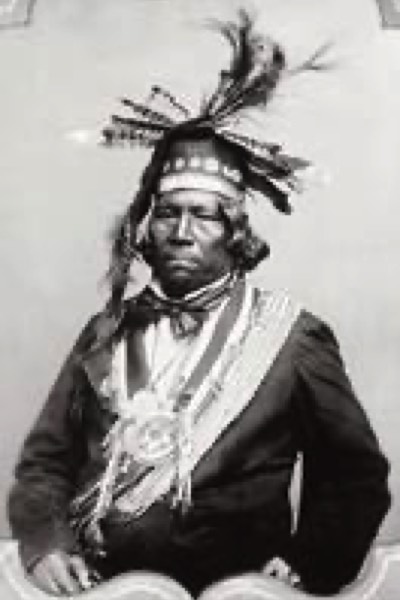
Nevertheless, the French show of force led to a peace accord in 1667. Though most of the French soldiers then went home, some stayed, married and settled in New France. To soldiers willing to stay, the king also granted a piece of land, a year’s provisions and 100 Tournois pounds — the equivalent of a year’s salary. The idea was to enable men with combat training to contribute both to the settlement of New France and to its defence. About 400 men decided to stay, of whom 283 married. Very often, soldiers settled on the land that had been granted to their captain as a seigneurie. Many married Filles du Roi
Filles du Roi
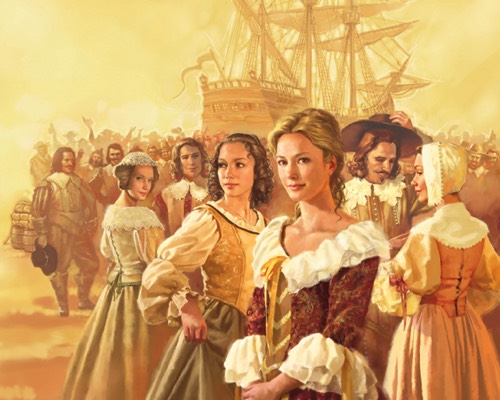
On the direct Cushing ancestor heritage line FR01, FR02, FR03, FR04, FR05, FR06 and FR07 On the direct Cushing ancestor heritage line from CATHERINE Dowde takes you to seven different Filles du Roi. The King's Daughters of the King (filles du roi or filles du roy in the spelling of the era) is a term used to refer to the approximately 770 young French women who immigrated to New France between 1663 and 1673 as part of a program sponsored by King Louis XIV.
• They must have emigrated to New France between 1663 and 1673 as part of a program sponsored by Louis XIV.
- The program was designed to boost Canada’s population both by encouraging male emigrants to settle there, and by promoting marriage, family formation and the birth of children. While women and girls certainly emigrated to New France both before and after this period, they were not considered to be filles du roi, as the term refers to women and girls who were actively recruited by the government and whose travel to the colony was paid for by the King. The title “King’s Daughters” was meant to imply state patronage, not royal or even noble parentage. Indeed in France at that time, it was custom that the poor young girls and orphans from charity hospitals be sought after in marriage by people of status, the bourgeoisie, and well-off artisans. They were ‘in demand’ because they were raised with a discipline that made good housekeepers out of them.
On the direct Cushing ancestor heritage line TB03 from MARIE Anne Meunier takes you to The three David brothers; Claude, Jacques and Guillaume; arrived in New France before 1650; and all were later married to Filles a Marier; the single girls sponsored by various companies, churches and seigneurs, to help increase the population of the small colony The brothers were from Rouen, Normandy, France; sons of Blaise Julien David and Flavie Morel. Young and energetic, they should have been very successful, except for one thing. They were Hugenots. Not feeling terribly welcomed, they decided to try their luck in New Amsterdam (now New York), which was run by the West India Company. Since the Dutch never tried to hide that fact that their interest in the 'New World' was purely financial; they supported religious freedom and open trade. However, they were also often aggressive toward the Native populations, so the political climate was hostile at best.Therefore, the boys decided to go back to Quebec, and were confirmed into the Catholic faith on August 10, 1659. Claude married Susan Denoyen and had two boys. He settled at Trois Rivieres. Jacques married Marie Grandry, had seven children and settled at Chateau Richer. Guillaume married Marie Armand, had six children and settled first at Trois Rivieres and then Sorel.
Filles a Marier
On the direct Cushing ancestor heritage line FM01 and FM02 from CATHERINE Dowde takes you to two different, Filles a Marier. A filles à marier or “marriageable girls” were young girls who emigrated to New France (Canada). One quarter of all the single girls arriving in New France through 1673. They were recruited and chaperoned by religious groups or individuals who had to assure and account for their good conduct. In general, they were poor, although there were some members of the petty nobility among their ranks.As opposed to the Filles du Roi who emigrated between 1663 and 1673, the filles à marier came alone or in small groups. They were not recruited by the state and did not receive a dowry from the King. They were promised nothing but the possibility of a better life. If they survived the perils of the crossing, they lived with the daily threat of death at the hands of the Iroquois. If they survived the Iroquois, they had to deal with the hard life of subsistence farming, harsh winters spent in a log cabin that they may have helped build, epidemics of smallpox and “fever” and difficult and often dangerous childbirth.Crossing the Atlantic was a dangerous undertaking in the 1600s, and it is estimated that 10% of all passengers en route to New France died during the crossing. Sickness and disease were the main factors contributing to deaths at sea. In France, the girls would have had little or no choice in their marriages because arranged marriages were the norm for the artisan and working classes as well as for the elite. Young girls were placed in convent schools or pensions only to await a marriage in which they had no choice or to become a nun. In New France, these women could choose whom they wanted to marry and had the freedom to change their minds before the marriage took place.
• Must have arrived before September 1663
• Must have come over at marriageable age (12 thru 45).
• Must have married or signed a marriage contract at least once in New France or have signed an enlistment contract
• Must not have been accompanied by both parents
• Must not have been accompanied by or joining a husband.
GH01 from SOPHIA Hannah Anderson leads via the deaths at sea of the family Ancestors emigrating from Scotland to America on a ship called the Caledonia in 1682 (parents and their parents died on the ship in the Atlantic) all the way back to Lord GALFRID de Limésy (alias de Limesi) on the CU01 and AL01 lines. The Humes were a Berwickshire family. In 1682, a young man named WILLIAM Hogue, son of Sir JAMES Hogue, who was a son of GEORGE Hogue, a son of Sir JOHN Hogue, of Busselboro, Scotland, evidently in good circumstances, emigrated to America on account of the religious persecutions under the Stuarts. The Humes were from Paisley, Scotland, father, mother, and daughter, BARBARA by name. Hume was one of two brothers, men of wealth and standing, who differed on the great questions of the day. One of the brothers conformed, the other, James, was true to the Covenant. He was imprisoned and most of his property confiscated, but through the influence of his brother was released on condition of his emigrating to America. During the long voyage a pestilence broke out in the overcrowded ship and Sir JAMES Hume. and Lady MARJORIE Hume were among the victims. BARBARA was left alone, and WILLIAM Hogue became her protector. He delivered her and her property into the hands of an uncle, a physician named Johnson, who was already in New York, and he went to Perth Amboy to make himself a home. But it was not a final farewell; an attachment had sprung up between them, and in due time he returned to make her his wife.
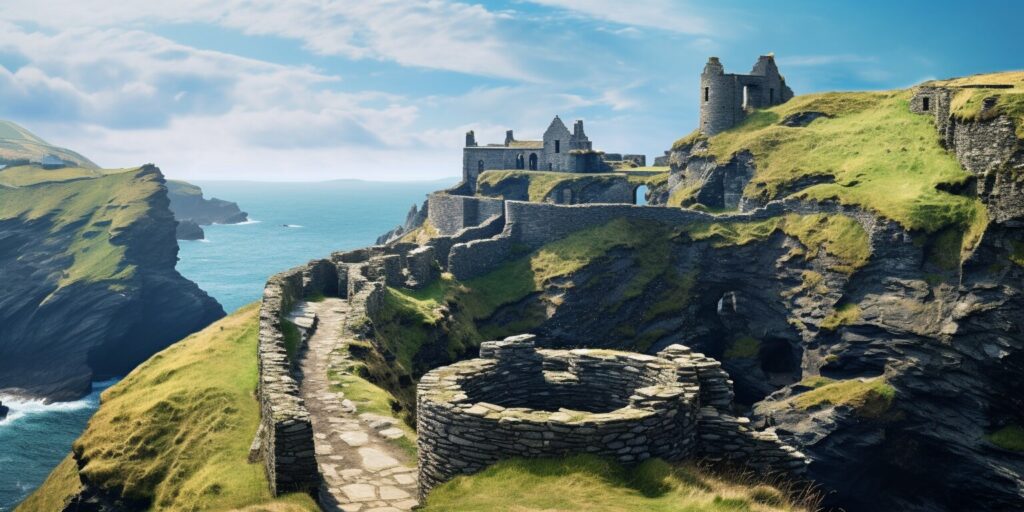
KRC001 and KRC002 lead to King Richard of Cornwall who built Tintagel Castle
In May 1233 the younger brother of Henry III, Richard, Earl of Cornwall (1209–72), exchanged three of his manors for a small parcel of land on the north Cornish coast.Stranger still, this land he coveted contained little more than an isolated and inhospitable rocky headland specifically mentioned in the deed of exchange – as ‘the island of Tyntagel’ – which was connected to the mainland by a narrow land bridge.The key to making sense of this apparently disadvantageous deal – and why Earl Richard did what he did with his new manor – is the powerful hold that King Arthur exerted on the imaginations of medieval lords and kings.Soon afterwards, other members of the earl’s family were creating similar ‘Arthurian’ monuments, notably his nephew, Edward I, who had a round table made at Winchester, seized the ‘Crown of Arthur’ from the Welsh princes, and rebuilt the supposed tomb of Arthur and Guinevere at Glastonbury Abbey in Somerset.Tintagel Castle, meanwhile, only enjoyed the briefest moment of glory. Within as little as a decade the buildings on the cliff top were showing signs of instability; and by 1337, when the earldom was elevated into a duchy, the castle was described as ruinous – a state from which it never recovered.
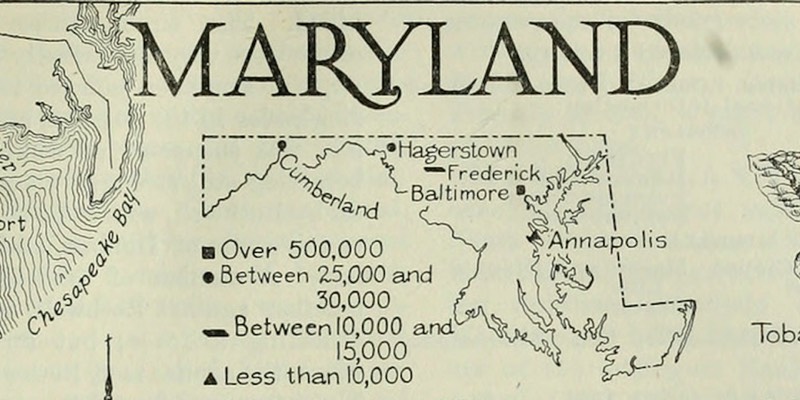
Britain had been shipping convicts to America for decades before they started sending them to Australia. In fact, it was precisely because of America’s fight for independence that the Brits had to start sending their criminals to Australia. But from 1718 until 1775, convict transportation to the American colonies flourished. Some estimates claim that almost 10 percent of migrants to America during this time were British convicts. This means, if you had ancestors in the American colonies during that time, they probably come as unwanted convicts, against the will. What was done by the British was to banish a convict to America was for a term of either seven or fourteen years, after which the convict could theoretically come back the Britain. Some female convicts were transported to the American colonies as well, for crimes such as being “lewd” and “walking the streets after ten at night.”
Before the Transportation Act of 1718, criminals either escaped with just a whipping or a branding. They were then released back onto the streets to commit more crimes. Or they were hanged. Because the jails were not intended for long-term incarceration, there was nothing in between.
After the passing of the Act, transportation became the main punishment at the courts’ disposal. From May 1718 to the outbreak of the American War of Independence in 1775, over 70 per cent of those who were found guilty at the Old Bailey were sentenced to be transported, compared with less than one per cent in the period from 1700 to March 1718.
From George Hume b1615 on the GH01 line follow DH01 to get to Sir LAURENCE De Preston, Knight who was a General in King David II Army in 1335. David II was King of Scots from 1329 until his death in 1371. Upon the death of his father, Robert the Bruce, David succeeded to the throne at the age of five, and was crowned at Scone in November 1331, becoming the first Scottish monarch to be anointed at their coronation.
From Hingham in Norfolk to Hingham in America…
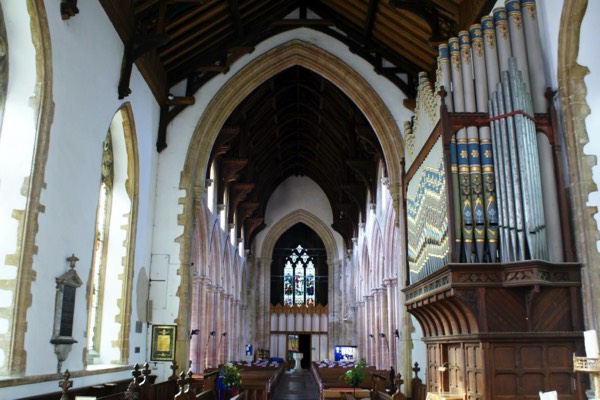

The town of Hingham, originally spelled "Hengham", is an ancient settlement, as its Saxon name denotes. It is next to the much smaller settlement of Hardingham. Many Cushings come from this area and the CU01 line passes through many of them. It was the property of King Athelstan, in 925, and of William the Conqueror in 1066 and 1086 as a well populated parish in the hundred of Forehoe, and retained many privileges coming from its royal ownership, including "the grandeur of St Andrew's," a parish church rebuilt in the 1300s. Thomas de Morley, 5th Baron Morley is buried in its chancel. In the years that followed, the town was a clear royal domain, for William the Conqueror and many others.
The persecutions under Queen Mary had led to the growth of Puritanism. There were three ways of regarding the Christian Church. First, the Roman Catholic way, which said outward organisation and ceremony is important. Second, the Puritans, who said outward forms are useless, the inward spirit is everything. Third, the Church of England, who said outward forms are useful so far as they express the inward spirit.
All three believed their own view to be right and others wrong. All three, when they had the power, tried to suppress the other two. Toleration was unknown.
In turn Roman Catholics, Puritans, and Church of England were suppressed. In turn many of them emigrated to America the Roman Catholics to Maryland, the Puritans to Massachussetts, the Church of England to Virginia. The Cushing Ancestors were Puritans. Indeed a great many Puritans resided in and around Hingham. They were not at that time a separate body from the Church of England. One of them, Robert Peck, was Rector of Hingham. The way in which he, and others, showed what they felt was by holding conventicles. These were prayer meetings in private houses. Such a meeting to-day would be considered an excellent thing. In those days they were new and regarded with suspicion, as probably mixed up with politics, and therefore to be suppressed. R. Peck also refused to attend the Synods of the Church, he was therefore regarded as a dangerous man.
In Hingham since the Reformation, the Holy Table had been removed from the East end of the Church and placed facing south, under the Chancel arch. It was used to hold the coats and hats of the congregation. Some of Rev. Peck's flock, the Cushings amongst them, broke into Hingham church and destroyed the altar rails. These altar rails had been, not by Peck's orders, but possibly with his approval, chopped up and thrown into the Parson's Pit, just opposite the west end. Worse than this having been ordered to reinstate the high alter they had dug a hole lowered the one "high" altar into it making it a low alter, suited to hold the coats and hats again. Peck was held to be responsible by the church authorities and was eventually excommunicated. He left Hingham. Luke Skippon, another cleryman, was put in charge to carry on the services of the Church and return it to proper worship. Many of the parishioners had, by this time, already crossed the Atlantic, following the first emigrants who left England in the " Mayflower." They followed the dictates of conscience and that desire for liberty which is one the strongest feelings within the human heart.
In 1633, migration from England to the Americas began with a number of participants on a ship named the Bonaventure. Robert Peck, the Rector of St Andrew's Church, and his associate Peter Hobart, plus many of the Cushing family emigrated to the new colony of Massachusetts with half of the rest of Pecks congregation, most likely all of the 133 people on HMS Diligent, which departed in June 1638 from Ipswich, England were from Hingham.
The passengers on the Diligent, working-class people such as shoemakers and millers, a number of ministers, and gentry, were mostly Puritans. Once there, the passengers founded "New" Hingham, to remind them of "Old" Hingham in England... An Englishman, it is said, carries his home wherever he goes, so they united their new home with memories of the old home in Norfolk, by giving it the name of Hingham.
Here was built, we believe, the first place of worship in the United States, and to Hingham, Mass., R. Peck emigrated and became their pastor for some 10 years. Then the emigrant learnt that Cromwell was in power, that Charles I. and Archbishop Laud were in prison, that the Church of England was being suppressed, just as the Puritans had been suppressed, so he set sail for England, and came back to Norfolk. He found that a clergyman named Dey had been made Rector, so, with the aid of his political friends, he turned out Dey and resumed his position as Rector of Hingham. At this time anyone found using the Prayer Book was fined £5, and Puritan politicians treated the Church of England with the same intolerance that Church of England politicians had treated them. Here R. Peck lived and here he died before the death of Cromwell brought the Puritan regime to an end.
On the direct Cushing ancestor heritage line KF03 can be picked up on the AH01 line at ANNE le Strange b1462 and it is also connected to KF01 to the Roman Emperors. Dates before 1500 are usually approximate as births and deaths were often not registered only names of children. I have used Wills, graves, encyclopaedia references, books and web sources such as Wikipedia and have only recorded on this tree plausible dates, the web is unfortunately full of impossible records!
On the direct Cushing ancestor heritage line LG01 passes via Lady GODGIFU (better known as Lady GODIVA) if KF01 is in your ancestry - follow LG01 from MAUD. Dates before 1500 are usually approximate as births and deaths were often not registered only names of children. I have used Wills, graves, encyclopaedia references, books and web sources such as Wikipedia and have only recorded on this tree plausible dates, the web is unfortunately full of impossible records!
On the direct Cushing ancestor heritage line KF01 just follow HP02 or HP01 until you get to ISABELLA Heligan b1307 then follow KF01 the line passing through her mother MARGARET to get to the Roman Emperors VIA the Kings of Bourgogne. KF01 leads to the Kings of France. Dates before 1500 are usually approximate as births and deaths were often not registered only names of children. I have used Wills, graves, encyclopaedia references, books and web sources such as Wikipedia and have only recorded on this tree plausible dates, the web is unfortunately full of impossible records!
KF001 a variant of KF01
On the direct Cushing ancestor heritage line KF001 is a variant of KF01 so reaches the same place but picks up a rather interesting line LG01. Pick it up at JOHN le Strange on the KF03 line. Dates before 1500 are usually approximate as births and deaths were often not registered only names of children. I have used Wills, graves, encyclopaedia references, books and web sources such as Wikipedia and have only recorded on this tree plausible dates, the web is unfortunately full of impossible records!
On the direct Cushing ancestor heritage line CG02 from KF01 first go to CHARLES the Bald King b823 on KF01 then follow CG02 to CHARLEMAGNE (KARL I - Charles the Great) the “Father of Europe”. Go to KARL I 0758 VIA any pathway then follow his wife and the pathway ER01 to get to the great CONSTANTIN of Emperor of Rome b274. You can also follow ER01 from SIMON de Montfort b1208 on the HP02 line. Dates before 1500 are usually approximate as births and deaths were often not registered only names of children. I have used Wills, graves, encyclopaedia references, books and web sources such as Wikipedia and have only recorded on this tree plausible dates, the web is unfortunately full of impossible records!
On the direct Cushing ancestor heritage line ER01 goes to the great CONSTANTIN of Emperor of Rome b274. You can also follow ER01 from SIMON de Montfort b1208 on the HP02 line. Dates before 1500 are usually approximate as births and deaths were often not registered only names of children. I have used Wills, graves, encyclopaedia references, books and web sources such as Wikipedia and have only recorded on this tree plausible dates, the web is unfortunately full of impossible records!
On the direct Cushing ancestor heritage line follow WC01 from THOMAS’s wife URSULA b1490 as an alternative by direct route to WILLIAM the Conqueror via the Norman Kings rather than the less direct line via his half sister Lady CHRISTINE de Conteville b1035. From her you can also go to WILLIAM via the same code as she was his half sister, thus via her father.
CRISTINA Ætheling was the daughter of Edward the Exile and Agatha, and the sister of Edgar Ætheling and Saint Margaret of Scotland, she was born in the 1040s. Cristina came to the Kingdom of England with her family in 1057, from Hungary. Along with her siblings, she went into exile in the Kingdom of Scotland, at the court of Malcolm III, her future brother-in-law. Cristina's nieces Edith and Mary were sent to Romsey Abbey, near Southampton, in 1086 when she was abbess.
There is some debate about if she had children or not and is said to have married Baron of Oxenburgh RALPH de Limésy (alias de Limesi) on the direct Cushing line. With other pathways to the same ancestors this is not a real issue on this tree, but I have taken some lines through CHRISTINA alongside the alternatives.
On the direct Carrington/Rankin ancestor heritage line DR01 of the Carrington family goes back to OILIOLL Cassfiaclagh King of Ireland in 160BC but dates are very sketchy this far back as I have names from historical texts but not accurate birth dates after Crommcenn. The Scottish Renaissance humanist George Buchanan gave a long list of Scottish Kings in his history of Scotland—published in Latin going back even further titled Rerum Scoticarum Historia in 1582—most of the earliest kings are now considered by historians to be figures of legend,or completely misrepresented. The list went back around 1900 years from 1580 and began with Fergus I. James VI of Scotland, who was Buchanan's pupil, he adopted the story of Fergus I as his ancestor, and the antiquity of the line was emphasised by the House of Stuart. So if ancient Scottish and Irish history is of interest and the Kings and Queens of Dál Riata follow the Rankin family from my mothers mother JESSIE Rankin and then DR01 all the way back more than 2,100 years of direct ancestral line! At ETHNE Eldest Daughter MacCorbred II b 0050 I have included a link to the book as I have used evidence from it past this point.
Keep going on the DR01 to CAIRPE Cairbre Crommchenn Allathairn Cairbre Crom ("Cairbre the Hunched"; fl. c. AD 556) who was an Irish king of the 6th century AD; he was 11th King of Uí Maine, in the west of Ireland. Dates before 1500 are usually approximate as births and deaths were often not registered only names of children. I have used Wills, graves, encyclopaedia references, books and web sources such as Wikipedia and have only recorded on this tree plausible dates, the web is unfortunately full of impossible records!
On the direct Cushing ancestor heritage line from HP02 you can take a detour at NICOLAS b1525 on the pathway marked TB01 to The Chief Butlers of Ireland a genealogical journey to a lavish and fascinating life of one of the most powerful families in Irish history called “the Butlers”.The lives of the Butlers were defined by incredible wealth, power and splendour. The family held the title of Chief Butler of Ireland and was later awarded the Earldom of Ormond(e) and a number of subsidiary titles. They were based at Kilkenny Castle for more than five centuries (from 1391 to 1935), and at other seats including Nenagh, Cahir, Roscrea, Kilcash and Thurles. Our direct ancestral line joins them at the 4th Chief Butler 4th Chief Butler in 1242 when he married Lady Joan FitzJohn one of our ancestors. Dates before 1500 are usually approximate as births and deaths were often not registered only names of children. I have used Wills, graves, encyclopaedia references, books and web sources such as Wikipedia and have only recorded on this tree plausible dates, the web is unfortunately full of impossible records!
On the direct Cushing ancestor heritage line, if you really want a very long journey through ancestral history taking you back via the Councils to the Roman Empire to DAHN Konige born 400 years before Christ in 0400BC follow CR002 from OLIVE Maud (ne Hodges) Cushing b1907. You can get to the same place by following KF01 to Judith of Flanders the daughter of CHARLES b823 then switch via her husband to CR002 or if you want to get to CHARLEMAGNE follow CR002 then switch to CHARLES b823 and CG02, don’t worry you are still following a direct ancestral line. Dates before 1500 are usually approximate as births and deaths were often not registered only names of children. I have used Wills, graves, encyclopaedia references, books and web sources such as Wikipedia and have only recorded on this tree plausible dates, the web is unfortunately full of impossible records!
Doctor Hawley Harvey Crippen
Attempted Murder
AM001 Goes forward to a Cushing son who was charged with attempted murder with a axe of his father and sister in law!
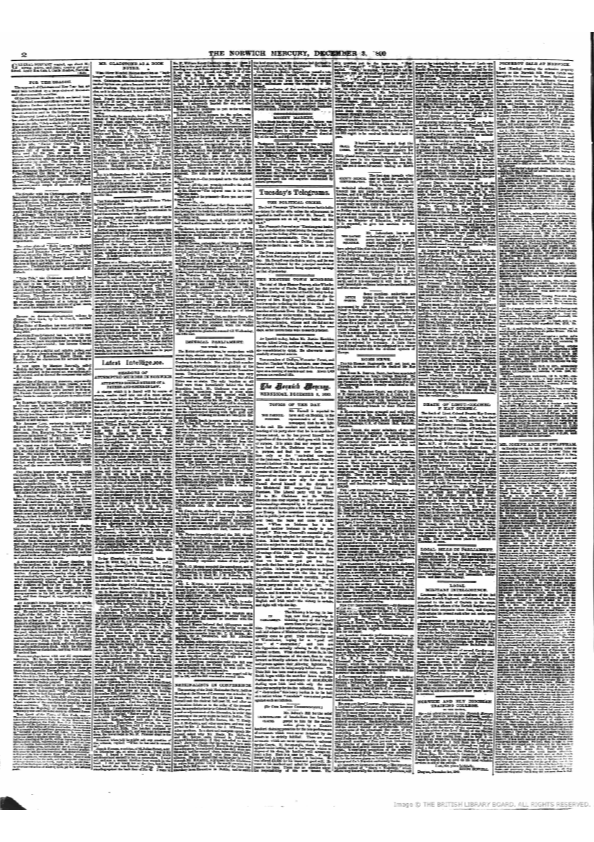
Crimean War.
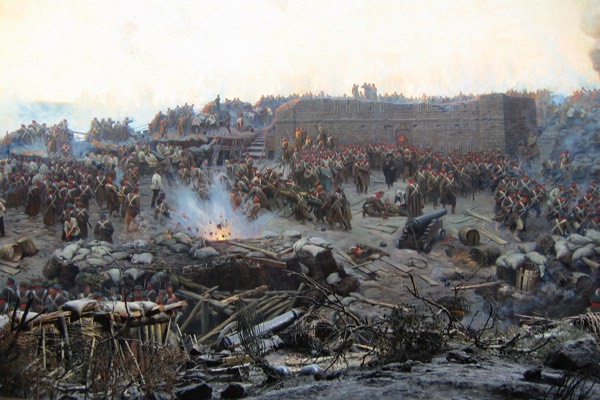
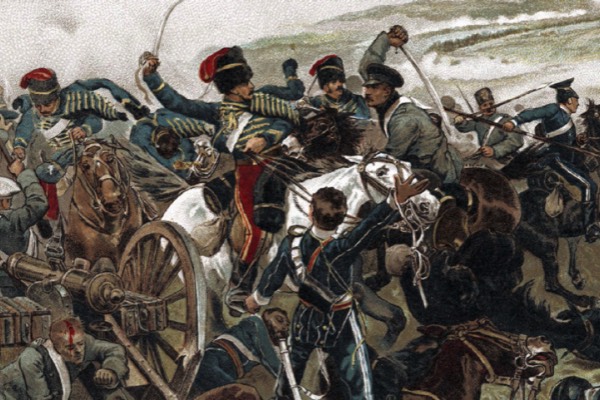
Whilst on the FR02 line take a stop off on WILLIAM George Longfield Dowde who Died 31/08/1855 fighting in Avtonomna Respublika Krym Ukraine during the Siege of Sevastopol just one month before the end of the war. The siege of Sevastopol (at the time called in English the siege of Sebastopol) lasted from October 1854 until September 1855, during the The allies (French, Sardinia, Ottoman, and British) landed at Eupatoria on 14 September 1854, intending to make a triumphal march to Sevastopol, the capital of the Crimea, with 50,000 men. The 56-kilometre (35 mi) traverse took a year of fighting against the Russians. Major battles along the way were Alma (September 1854), Balaklava (October 1854), Inkerman (November 1854), Tchernaya (August 1855), Redan (September 1855), and, finally, Malakoff (September 1855). During the siege, the allied navy undertook six bombardments of the capital, on 17 October 1854; and on 9 April, 6 June, 17 June, 17 August, and 5 September 1855.
The Siege of Sevastopol is one of the last classic sieges in history. The city of Sevastopol was the home of the Tsar's Black Sea Fleet, which threatened the Mediterranean. The Russian field army withdrew before the allies could encircle it. The siege was the culminating struggle for the strategic Russian port in 1854–55 and was the final episode in the Crimean War.
During the Victorian Era, these battles were repeatedly memorialized. The Siege of Sevastopol was the subject of Crimean soldier Leo Tolstoy's Sebastopol Sketches and the subject of the first Russian feature film, Defence of Sevastopol. The Battle of Balaklava was made famous by Alfred, Lord Tennyson's poem "The Charge of the Light Brigade" and Robert Gibb's painting The Thin Red Line. A panorama of the siege itself was painted by Franz Roubaud. the last classic sieges in history. The city of Sevastopol was the home of the Tsar's Black Sea Fleet, which threatened the Mediterranean. The Russian field army withdrew before the allies could encircle it. The siege was the culminating struggle for the strategic Russian port in 1854–55 and was the final episode in the Crimean War.
On the direct Cushing ancestor heritage line RO01 leads to ROLLO (860-930) The famous Viking chieftain who became the founder and first ruler of the region of Normandy. He converted to Christianity as part of a deal with the Frankish king Charles the Simple (893-923 CE) in 911 CE (changing his name to Robert), the Frankish king Charles is also a direct ancestor. Again there are two different family lines that lead to ROLLO but I have used the same code. Follow KN01 from MARGARET Nevill b1485 for EDWARD of Woodstock (1330-1376), who became known as the Black Prince and was one of the most famous commanders during the Hundred Years’ War. He was the son and heir apparent of EDWARD III of England. Dates before 1500 are usually approximate as births and deaths were often not registered only names of children. I have used Wills, graves, encyclopaedia references, books and web sources such as Wikipedia and have only recorded on this tree plausible dates, the web is unfortunately full of impossible records!
On the direct Cushing ancestor heritage line SK01 from ROLLO b860 via HP02 or RO01 l leads to SVEIDI 'the Sea King’. Dates before 1500 are usually approximate as births and deaths were often not registered only names of children. I have used Wills, graves, encyclopaedia references, books and web sources such as Wikipedia and have only recorded on this tree plausible dates, the web is unfortunately full of impossible records!
In one of Ingra Whiteside (Nee Cushing) stories she told me about a tale from William George Longfield Dowde. Aparently an ancestor, then just a baby named INGRIA Augustus House of the father ADAM House was hidden in an apple barrel when Indians attacked their small holding in Canada. The father ADAM was unfortunately killed by the Indians. The little baby girl hidden by her father in the old apple barrel before he was killed survived. The Indians did find the barrel and threw it into the river maybe not knowing the baby was inside. It floated down the river and then over a "large" waterfall and then smashed open when it hit the bottom of the waterfall with the little baby girl still inside it. People found her in the river. Many years later Pauline Weinstine from a different line of the family told me how her father, had told her the very same story. I took it as just a family myth until I found some evidence of the story so it is at least partially true.
Talking to INGRIA's descendants in the Anderson family her adventures did not stop at the barrel experience. Her husband JAMES was Scottish and had emigrated to Canada to serve in the Royal Artillery, where as stated above he was a Sergeant in the 67th Regiment, quartered at Chambly during the Revolutionary war. When the British were pushed back into Canada, INGRIA revealed that she had been married to him in secret to her parents and she was then encouraged by her parents to follow JAMES into Canada. She did, but did not know where he had moved to. So she went door to door once she reached Canada to find him. The British were pushed back into Canada in 1775. [Note: his eldest brother was also James (I). He died as a young boy at 6 years, 9 mos. and prior to JAMES (II) being born]. Many of the units and batteries of the Royal Regiment of Canadian Artillery are older than the Dominion of Canada itself. The first artillery company in Canada was formed in the province of Canada (Called New France at that time) in 1750.
On the direct Cushing ancestor heritage line you can pick up HP04 at EDMOND de Mortimer (1251 - 1304) ON THE KF001 LINE to and from there get to William Longsword (French: Guillaume Longue-Épée, Norman: Willâome de lon Espee, Latin: Willermus Longa Spata, Old Norse: Vilhjálmr Langaspjót; c. 893 – 17 December 942) who was the second ruler of Normandy and the son of the Viking Rollo (while he was still a pagan) and his wife Poppa of Bayeux, from 927 until his assassination in 942. He is sometimes anachronistically dubbed "duke of Normandy", even though the title duke (dux) did not come into common usage until the 11th century. Longsword was known at the time as count (Latin comes) of Rouen. They are consistently referred to as Rollo and his son William as the principles (chieftains) of the Normans.
HP05 is an alternative line to HP04 which it picks up at ADELE de Brionne from ANNE of Stafford 1471 on the HP01 line.
On the direct Cushing ancestor heritage line KF01 to HAWISE Vexin 1042 you can take the RE04 pathway via his mother and go back via direct ancestors to the Roman Empire and Flavius Theodosius "the Great” of Rome b347. If you are on the FK01 pathway you can also join the RE04 ancestral path at GARNIER d'Herbauges b732. You can also follow RE04 until you pick up CR003 until you join CR002 then back 400 years before Christ. Dates before 1500 are usually approximate as births and deaths were often not registered only names of children. I have used Wills, graves, encyclopaedia references, books and web sources such as Wikipedia and have only recorded on this tree plausible dates, the web is unfortunately full of impossible records!
CR002 400 years before Christ
Follow CR003 from GUY I 0959 on the RE04 line to get to CR002 at CHLODEBAUD b430 then back 400 years before Christ. Dates before 1500 are usually approximate as births and deaths were often not registered only names of children. I have used Wills, graves, encyclopaedia references, books and web sources such as Wikipedia and have only recorded on this tree plausible dates, the web is unfortunately full of impossible records!
From RE04 at PEPIN II the CG03 line is an alternative route to CHARLEMAGNE. CG04 is an alternative pathway. Dates before 1500 are usually approximate as births and deaths were often not registered only names of children. I have used Wills, graves, encyclopaedia references, books and web sources such as Wikipedia and have only recorded on this tree plausible dates, the web is unfortunately full of impossible records!
LU01 from CATHERINE Dowde leads to Simon de Montfort Sixth Earl of Leicester who gives his name to De Montfort University who is credited with establishing the first Parliament of England in 1265. He is the son of Simon de Montfort, 5th Earl of Leicester, a French nobleman and crusader, and Alix de Montmorency to his paternal grandmother Amicia de Beaumont, the senior co-heiress to the Earldom of Leicester and a large estate owned by her brother Robert de Beaumont, 4th Earl of Leicester, in England and his father who took part in the Albigensian cusades. With the irrevocable loss of Normandy, King John refused to allow the elder Simon to succeed to the earldom of Leicester and instead placed the estates and title into the hands of Montfort senior's cousin Ranulf, the Earl of Chester. Napoleon Bonaparte described Simon de Montfort as "one of the greatest Englishmen".
His father Simon de Montfort, 5th Earl of Leicester (c. 1175 – 25 June 1218), Also Viscount of Albi, Béziers and Carcassonne from 1213, as well as Count of Toulouse from 1215. known as Simon IV (or V) de Montfort and as Simon de Montfort the Elder, was a French nobleman and knight of the early 13th century. He is widely regarded as one of the great military commanders of the Middle Ages. He took part in the Fourth Crusade and was one of the prominent figures of the Albigensian Crusade.
Hero or Villain?: Two views on Simon de Montfort, Crusade Leader
There is perhaps no better medieval example of the phase ‘Truth is in the eye of the beholder’ than these two versions of the death of Simon de Montfort, the leader of the crusaders during the Albigensian Crusade.
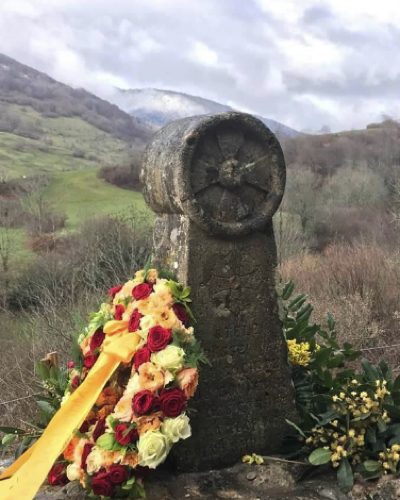

What were the Albigensian Crusades?
Cathars believed, contrary to accepted Catholic doctrine, in dualism - the belief that two opposed forces exist; God (the force of good) and demiurge (the force of evil). For Cathars, the physical world was evil and the spiritual world was pure and unsullied by the physical world. In this view, Jesus was not a man but a phantom angel. Because Jesus was divine, the Cathars believed stories about him in the Bible were allegorical. This belief ran afoul of Catholic doctrine which was monotheistic, and believed Jesus had both divine and human nature.
For Catholic hierarchy, the Cathars heresy was bad enough, but was made worse by its application. Because Cathars rejected the evil physical world, they also rejected the Catholic Church as an unworthy corruption of the corporeal world. They said money should be used to feed the poor not decorate the churches with gold. As such, Cathars rejected Christian sacraments, oaths, allegiances and, most offensive of all to the papacy, the authority of the Church. They even had women priests. Pope Innocent III, coming to the papacy in 1198, resolved to stamp out the Cathar heresy. For assistance he turned to King Philip II of France, who was supportive but, as France was at war with England at the time, unable to commit a fighting force. As a solution, with Phillip’s tacit support, the pope proclaimed the Albigensian Crusade in 1209 (so named as the city of Albi in Languedoc was a centre of Catharism).
The call went out to Christendom, and a crusading army made up of professional soldiers, mercenaries and common folk pilgrims assembled near Lyon. The terms of commitment for the crusade were attractive to the soldiering class: crusaders only had to commit for forty days service in exchange for atonement of all their sins, and, even better, they would be allowed to keep booty and lands they “liberated”. The Crusaders were to be led by the papal legate, the abbot of Citeaux Arnaud Amalric. The call for crusade was taken up by many nobles from northern France, including Simon IV of Montfort, lord of Montfort-l’Amaury and earl of Leicester. By the year 1209 he was elected the leader of the crusaders and became the count over the lands he confiscated from the various nobles of southern France who resisted the invasion.
The Albigensian crusades, which lasted for twenty years, were known for its ferocity and brutal behaviour of its participants. One example is from where I now live, Bezier. The routiers poured into the streets and began to plunder the city. Many citizens of Bézier sought safety in the town churches of St. Jude and St. Madeleine and the Cathedral of Saint Nazaire. Legend has it that Arnald Amalric was asked what to do about the citizens sheltering in the churches who included both Catholics and Cathars. His response was “Caedite eos. Novit enim Dominus qui sunt elus” ("Kill them all, for the Lord knoweth them that are His"). Slaughter ensued; the doors of the churches were broken, and all inhabitants killed, including priests. The Cathedral of Saint Nazaire was set afire and its roof collapsed, killing everyone inside. While accurate numbers are not known, it is estimated that several thousand people were massacred in Bezier. Upon leaving, the crusaders set the town on fire.
EA01 goes back via the direct line to Eleanor of Aquitaine (1122–1204) The first Queen of France. Two of her sons Richard and John went on to become Kings of England. Educated, beautiful and highly articulate, Eleanor influenced the politics of western Europe through her alliances and influence over her sons.
AL01 Alternative to LIMISI line
AL01 is also an alternative to the Cushing heritage line to a brother Limisi picked up from the CR002 line at ROBERT le Blount 1198 and then rejoins the male Cushing line (CU01) at the Limisi family. Dates before 1500 are usually approximate as births and deaths were often not registered only names of children. I have used Wills, graves, encyclopaedia references, books and web sources such as Wikipedia and have only recorded on this tree plausible dates, the web is unfortunately full of impossible records!
At FRANCIS Yarnall b1620 on the CR002 line I have added the FL001 line. THIS IS JUST FOR FUN - FL stands for the Fun Line, it starts of seriously enough but once I got to PHOENIUSA Farsaidh King of Scythia 2533bc with some folks living to be 200 years old and really, really struggling with the Arabic language, so in despair I decided to switch to the Book of Genesis for the ancestral path and go back, via NOAH to Adan and Eve just for some “fantasy” fun, that’s 4000 bc BUT with some very strange DOBs relative to the ancestors (as many of other peoples family trees seem to consist totally of causing me much distress at times)….. as I have said FL001 is the FUN LINE so please dont take it as literal as the other research I have done. It does go to 2000bc with some proof of birth and linage so it’s not all just fun, then again it is Irish history and they are very good at stories………as is the Bible. And no, I have not found Jesus yet………
Attila the Hun, was the ruler of the Huns from 434 until his death, in March 453. He was also the leader of an empire consisting of Huns, Ostrogoths, Alans, and Bulgars, among others, in Central and Eastern Europe. Whilst records are not accurate they are better forwards from Almos.Álmos descended "from the line" of Attila the Hun. A late-13th-century chronicler, Simon of Kéza, wrote that Álmos was "of the Turul kindred".He also wrote that Attila the Hun carried a banner which bore "the image of the bird the Hungarians call turul", probably either a gyrfalcon or a hawk. A bird has an important role in the legend about Álmos's birth, which was preserved by both the Gesta Hungarorum and the Illuminated Chronicle.The legend says that Álmos's mother, already pregnant with him, dreamed of a bird of prey "which had the likeness of a hawk" impregnating her.This story has close analogies in the nomadic, steppe environment. Notably, in The Secret History of the Mongols.Follow AT02 from Almos for a "possible" pathway to Attila.
If the bible is not your thing how about In Norse mythology just follow NM001all the way back to Bölthorn (or Bölthor) who was a frost giant, the father of Bestla and maternal grandfather of Odin. Follow the fun line FL001 first until you reach COLMAN MacBáetáin High King of Ireland then rather than continuing to Adam and Eve switch lines to NM001. According to Hávamál who you get to on this documented Ancestral line, he was the father of a nameless giant who taught ODIN nine magic charms or "songs" (galdrar). We of course also pass through ODIN the supreme god of Germanic and Norse mythology. His role, like many of the Norse pantheon, is complex, but his roles are by far the most numerous. Like all journeys in life, it is all serious and true at first……But I got to a point all of the available documentation was in myths and legends, sometimes even songs……
On the direct line from JAMES Plant 1803 take UK01 back to Kyiv and SVIATOSLAV I Igorevich (0922 - 972) Sviatoslav I Igorevich (Old East Slavic: Ст҃ославъ / Свѧтославъ Игорєвичь, romanized: Svętoslavŭ Igorevičǐ; Russian: Святослав Игоревич; Ukrainian: Святослав Ігорович, romanized: Sviatoslav Ihorovych; Belarusian: Святаслаў Ігаравіч; (943 – 26 March 972), also spelled Svyatoslav, was Grand Prince of Kiev and his mother Saint Olga
He was famous for his persistent campaigns in the east and south, which precipitated the collapse of two great powers of Eastern Europe, Khazaria and the First Bulgarian Empire. He also conquered numerous East Slavic tribes, defeated the Alans and attacked the Volga Bulgars, and at times was allied with the Pechenegs and Magyars (Hungarians).
His decade-long reign over the Kievan Rus' was marked by rapid expansion into the Volga River valley, the Pontic steppe, and the Balkans. By the end of his short life, Sviatoslav carved out for himself the largest state in Europe, eventually moving his capital in 969 from Kiev (modern-day Ukraine) to Pereyaslavets (identified as the modern village of Nufăru, Romania) on the Danube.
Sviatoslav is the villain of the novel The Lost Kingdom, or the Passing of the Khazars, by Samuel Gordon, a fictionalised account of the destruction of Khazaria by the Rus'. The Slavic warrior figures in a more positive context in the story "Chernye Strely Vyaticha" by Vadim Viktorovich Kargalov; the story is included in his book Istoricheskie povesti.
His mother was St. Olga, also called Helga or Saint Olga of Kiev, (born c. 890—died 969, Kiev; feast day July 11), princess who was the first recorded female ruler in Russia and the first member of the ruling family of Kiev to adopt Christianity. She was canonized as the first Russian saint of the Orthodox Church and is the patron saint of widows and converts.
Going back (Ancestors) to go forwards (Decendants). Note capital first names are only used for direct Ancestors.
To get to Henry VIII HE01 you need first to get to Henry VII who seized the throne from King Richard III after the Battle of Bosworth Field in 1485 and therefore wasn’t the rightful king of England. In fact, Henry VII’s claim to the throne was extremely tenuous; he was the great-great-grandson of the direct line to King EDWARD III’s then follow his fourth son with his third wife. Should the line of direct succession have continued, Henry would never have gotten anywhere near the crown! You can follow RF01 to the the earlier Kings of the English follow via the direct line to RALPH de Limisi then follow his Lady CHRISTINE b1030. Remember this particular pathway goes forwards from right to left looking at descendants not backwards looking at direct ancestors.
You can also get to Henry VIII via AE01 at URSULA Cushing. John Neville (brother to MARGARET Neville (URSULA Cushings mother) was married, in 1534, to Catherine Parr (1512–1548), daughter of Sir Thomas Parr of Kendal, Westmorland, and widow of Sir Edward Borough (d. 1533), son of Thomas Burgh, 1st Baron Burgh. She afterwards became the sixth wife of King Henry VIII. It all gets rather complicated a relationships in this family were let's just say, fluid.
Going back (ancestors) to go forward (descendants of those ancestors) so to speak and not a direct ancestor but a cousin (removed) follow the line CU01 to JOHN Cushing then Follow the suffix TS01 for George Cushing of Thursford Steam fame. Remember this particular pathway goes forwards from right to left looking at descendants not backwards looking at direct ancestors.
Going back (ancestors) to go forward (descendants of those ancestors) so to speak and not a direct ancestor but a cousin (removed) follow the line CU01 to GILBERT Cushing then follow the Suffix PC01 for Peter Cushing of Star Wars and Hammer House of Horror fame. Remember this particular pathway goes forwards from right to left looking at descendants not backwards looking at direct ancestors.
Going back (ancestors) to go forward (descendants of those ancestors) so to speak and not a direct ancestor but a cousin (removed) follow the line AG01 from THOMAS Cushing to reach Caleb Cushing the Attorney General of the US under President Franklin Pierce. Remember this particular pathway goes forwards from right to left looking at descendants not backwards looking at direct ancestors.
Going back (ancestors) to go forward (descendants of those ancestors) so to speak and not a direct ancestor but a cousin (removed) follow CU01 to THOMAS Cushing b1512 then AC01 to Lt. Col. Alonzo Hersford Cushing Captain of Battery A, 4th US Artillery in Battle of Gettysburg. Remember this particular pathway goes forwards from right to left looking at descendants not backwards looking at direct ancestors.
Going back (ancestors) to go forward (descendants of those ancestors) so to speak go first to Gilbert (1680) and then follow CA02 to Col Job Cushing (1869 – 1944) of the Cushing's Regiment of Militia (also known as the 6th Worcester County Militia Regiment) called up at Westborough, Massachusetts on August 16, 1777, as reinforcements for the Continental Army during the Saratoga Campaign. The regiment marched quickly to join the gathering forces of General Horatio Gates as he faced British General John Burgoyne in northern New York. The regiment served in Brigadier General Jonathan Warner's brigade. With the surrender of Burgoyne's Army on October 17, the regiment was disbanded on November 29, 1777. Remember this particular pathway goes forwards from right to left looking at descendants not backwards looking at direct ancestors.
Going back (ancestors) to go forward (descendants of those ancestors) so to speak and not a direct ancestor but a cousin (removed) follow CU01 to THOMAS Cushing b1512 then SC01 leads to William Cushing who was one of the original five associate justices of the United States Supreme Court. Remember this particular pathway goes forwards from right to left looking at descendants not backwards looking at direct ancestors.
Going back (ancestors) to go forward (descendants of those ancestors) so to speak and not a direct ancestor but a cousin (removed) follow CU01 to THOMAS Cushing b1512 then HC01 leads to Harvey Williams Cushing (1869 – 1939) A pioneer of brain surgery. Just keep going forward if you want to find the famous socialites known as the "Fabulous Cushing Sisters" in the 1920s. Remember this particular pathway goes forwards from right to left looking at descendants not backwards looking at direct ancestors.
CS01 from Harvey goes to the famous socialites known as the "Fabulous Cushing Sisters" in the 1920s. yes one married President Roosevelts son, but expect lots of divorces in these three party animals! Married six times in total, their last names read like a ‘Who’s Who’ in American aristocracy: Roosevelt, Astor, Whitney, Mortimer, Fosburgh and Paley. Remember this particular pathway goes forwards from right to left looking at descendants not backwards looking at direct ancestors.
LC01 leads to one of the first of the Americans families in Canada and to his son Lemuel Cushing (1842 – 1881) who became a lawyer and politician in Quebec. You will need to go back (ancestors) to go forward (descendants of those ancestors) so to speak and not a direct ancestor but a cousin (removed) use SC01 HC01 back to THOMAS Cushing and then follow LC01. Remember this particular pathway goes forwards from right to left looking at descendants not backwards looking at direct ancestors.
If it is a gun fighter who crossed paths with Doc Holiday, Wyatt Earp and the James Younger Brothers, you want find you will need to go back (ancestors) to go forward (descendants of those ancestors) so to speak and not a direct ancestor but a cousin (removed) use FF01 SC01 HC01 back to THOMAS and then follow OT01 forwards to the infamous Johnny Ringo (sometimes mistakenly stated as Ringgold). The fastest gun in the west if you believe all the hype in the films. Remember this particular pathway goes forwards from right to left looking at descendants not backwards looking at direct ancestors.
Going back (ancestors) to go forward (descendants of those ancestors) so to speak and not a direct ancestor but a cousin (removed) follow CU01 to THOMAS Cushing b1512 then the line WB01 leads to William Baker Cushing another US Civil War Hero. Remember this particular pathway goes forwards from right to left looking at descendants not backwards looking at direct ancestors.
Going back (ancestors) to go forward (descendants of those ancestors) so to speak and not a direct ancestor but a cousin (removed) follow CU01 to THOMAS Cushing b1512 then the line LS01 Luther Stearns Cushing (1803–1856) who was the author of one of the earliest works on parliamentary procedure, "Rules of Proceeding and Debate in Deliberative Assemblies" commonly known as Cushing's Manual. Remember this particular pathway goes forwards from right to left looking at descendants not backwards looking at direct ancestors.
Going back (ancestors) to go forward (descendants of those ancestors) so to speak and not a direct ancestor but a cousin (removed) follow CU01 to THOMAS Cushing b1512 then the line HR01 leads to William Orcutt Cushing. After having to retire from the ministry, Cushing asked God for something to do to occupy his time. He discovered he had a talent for hymn writing and made that a way to keep busy after work in the ministry. Throughout the rest of his life, Cushing wrote 300 hymns including "The Name of Jesus" and "Home at Last". In 1880, he co-wrote "Follow On" with Robert Lowry and W. Howard Doane. This hymn became popular and was associated with The Salvation Army; its tune was adopted by Scottish association football club, Rangers as the basis for their club anthem, "Follow Follow". Remember this particular pathway goes forwards from right to left looking at descendants not backwards looking at direct ancestors.
AL001 Leads to Abraham Lincoln. OK just a family link via a marriage, but Sarah Lincoln (an ancestor of Abraham Lincoln) married a Cushing descendant Daniel Cushing. The Cushing and Lincoln families were close friends living in Hingham and Wymondham back in the 1600s. If you explore Sarahs father he was involved in King Philip's War which was an armed conflict in 1675–1676 between indigenous inhabitants of New England and New England colonists and their indigenous allies. The war is named for Metacom, the Wampanoag chief who adopted the name Philip because of the friendly relations between his father Massasoit and the Mayflower Pilgrims.
I am happy to receive any information on these Cushings. Ireland lost many of its records in disasters over the years. The Cushing family did emigrate to Ireland and as such they are almost certainly all related.

The Cushings that went to Ireland are hard to track, and non more so than the criminals! I Whom no one wants to own and where names of parents and family members must be protected, but I will keep on researching this man. Matthew Cushing was born on 25 12 1712 in Limerick, Ireland And was executed by hanging in Boston on October 17 1734
I've browsed several books that either claim to know or speculate about how Cushings came to be in Ireland. The one thing they all agree on is that Cushing is not a native Irish name. They have been in Ireland since 1295 and the majority of these back then were in Co. Limerick, but a family of the name was evidently well established in Co. Westmeath, for among the 1582 pardons we find Edmond Cushene, of Cushenstown in that county, and Edward Cushine of the same place in the 1659 census. The estimated total number of Cushing (or it's Irish variants: Cushen and Cussen) in Ireland having Five Entries and upwards in the Birth Indexes of 1890 was 403 out of a population of 4,717,959. There were about 50 Cushing families in 1790 and only about 25 in 1734 when Mathew was born.
Matthew Cushing apparently did not receive much, if any, formal schooling either, for he was illiterate at the time of his execution. He was head-strong and rebellious from an early age, and his parents could barely control him. He left home at 16 and traveled to Dublin, where he landed a position as a servant at the country house of Lord Carbury. After serving two and a half years in this position, he returned to Dublin and lived for six months on whatever money he had managed to save. Once his money ran out, he went back to his parents.
After spending an unproductive year at home, his grandfather died and left him a small estate. However, his father refused to allow him to take his inheritance until he came of age, so he left home for good and traveled to Cork, where he sold himself into indentured servitude to a Captain Cox who was bound for Boston. Once he arrived in America, he decided instead to serve five years at sea, rather than the four on land for which he was originally contracted. Captain Cox sold him to a Man of War, where Cushing served for seven months until he was accused of stealing a watch. He claimed to be innocent of the act up until his death, although he admitted that there were circumstances that made it appear that he was guilty.
After being discharged from the ship, he spent his time on shore Drinking, Swearing, Whoring, and almost all other Vices.He later confessed that he was much addicted to lewd Women, and found many of them here to suit my mind; from whence I was led on to Stealing. One night in August 1734, Cushing broke into the house of Joseph Cook, a shoemaker. He stole some clothing and two gowns belonging to Cooks wife. He was soon caught and tried at the Superior Court in Boston, and since burglary was a capital offence, he received the death penalty. He was 22 at the time.
Why his case created such a sensation is not exactly clear. He was not the first burglar to be sentenced to death in Massachusetts, and the circumstances of the burglary were hardly noteworthy although he was hung alongside a murderer.
Perhaps the unremarkable nature of his crime was one of the reasons it generated so much attention. Both poems written about Cushing and Ormsby note that the formers crime was not that great, at least when compared with the latters. Yet both poems acknowledge that the law clearly states that anyone guilty of burglary must die. The execution of one criminal for a heinous murder, that in itself generated a great deal of interest, right next to another criminal for stealing a few articles of clothing perhaps created debate within New England society and brought added attention to Cushings case.
Downfall. He thought (no doubt) the darksome Nightwould have concealed his Crime, But it was brought to open Light within a little Time. (from A Mournful Poem)
Confession. Avoid lewd Women, ever shun Their Company, entangling Snares, By them, poor Youths are oft undone, The Truth of this Cushing declares. (from A Few Lines)
The execution of Cushing and Ormsby was scheduled to take place on Thursday, September 26, 1734, but the two received a reprieve from execution until October 17 from the Governor. When their day of reckoning finally arrived, Cushing and Ormsby were led to the gallows at Boston Neck, a narrow strip of land that connected Boston to Roxbury and corresponds with Washington Street today.
They to the fatal Place must ride Each Man his Coffin in the Cart, With Guard of Soldiers on each side: The Sight enough to pierce ones Heart. Then they arrive at the Gallows Tree, While Spectators lament and cry; Alas! how hard it is to see, Much more to feel their Destiny. (from A Few Lines)
Must have some fantasy too so…….
Commander Cushing
Commander Raymond Cushing is a recurring character in the second season of the TV series The Handmaid's Tale. He serves as a Commander in Gilead, as well as (presumably) being a member of the Sons of Jacob.
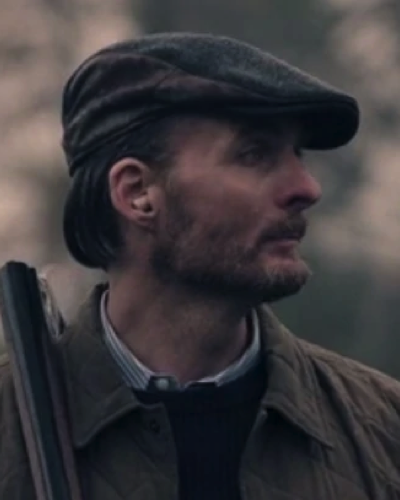
In the original script of the first episode, Commander Cushing had a Handmaid named Ofray who was hanged in a Salvaging after it was discovered that they were sleeping together outside the Ceremony. This scene was not included in the actual episode.
In reality the expression piss-poor is recent and has nothing to do with tanning. The current state of research suggests that it may have been invented during the Second World War, because the first examples in print date from 1946. The origin is straightforward. Piss began to be attached to other words during the twentieth century to intensify their meaning. Tanning used chemicals not piss……
Here are some other myths about the 1500s.
Most people got married in June because they took their yearly bath in May, and they still smelled pretty good by June. Since they were starting to smell, however, brides carried a bouquet of flowers to hide the body odour. Hence the custom today of carrying a bouquet when getting married. Baths consisted of a big tub filled with hot water. The man of the house had the privilege of the nice clean water, then all the other sons and men, then the women, and finally the children. Last of all the babies. By then the water was so dirty you could actually lose someone in it … hence the saying, “Don’t throw the baby out with the Bath water!”
Anyone with a mite of sense should realise that no, our mediaeval ancestors were not that filthy and unhygienic. They washed regularly, though given the lack of running water indoors, probably more often either ‘the necessary bits’ (surely we’ve all had a ‘sink bath’ or two in our lives?) or simply by going out to a stream or a lake (or a public bath-house, if you lived in a city; they were common throughout the Middle Ages). After all, while they hadn’t invented running indoor water yet, they also hadn’t invented industrial scale pollution of watercourses. Even the English weren’t that dirty
In Germany, in the early 1500s at the cusp of the late medieval period, throwing the baby out with the bathwater first appears in a satirical book called Narrenbeschwörung (‘Appeal to Fools’), along with a woodcut illustrating the scenario. It’s not very clear to me whether it was used in that book as an already extant proverb or simply as a joke that became one, but it is clearly portrayed as—indeed, the point is that it is something that only a fool would do, not something that anyone might do by accident.
Houses had thatched roofs-thick straw-piled high, with no wood underneath. It was the only place for animals to get warm, so all the cats and other small animals (mice, bugs) lived in the roof. When it rained it became slippery and sometimes the animals would slip and fall off the roof, resulting in the idiom, “It’s raining cats and dogs.”
Actually no cats or dogs would shelter from the rain in a leaky roof. Rats might be there but not on the top of the thatch. However Norse mythology depicts Odin, the god of storms, alongside dogs and wolves representing wind, while witches riding brooms during storms were often accompanied by black cats, symbolising heavy rain. So raining cats and dogs just means very heavy rain.
There was nothing to stop things from falling into the house from roofs however. This posed a real problem in the bedroom where bugs and other droppings could mess up your nice clean bed, therefore, a bed with big posts and a sheet hung over the top afforded some protection. Maybe that is how canopy beds came into existence.
The floor was dirt. Only the wealthy had something other than dirt, leading folks to coin the phrase “dirt poor.” The wealthy had slate floors that would get slippery in the winter when wet, so they spread thresh (straw) on floor to help keep their footing. As the winter wore on, they added more thresh until, when you opened the door, it would all start slipping outside. A piece of wood was placed in the entrance-way, subsequently creating a “thresh hold.”
"Threshold" actually has nothing to do with holding anything. It's "Thresh-old" an old Germanic word, and was þrescold in Old English, obviously different from healdan (to hold). It's pure coincidence that the latter came to resemble the ending of the former. Cognate words like Swedish tröskel have no similarity to hålla (the cognate of 'hold'), but it has an analagous similarity to tröska (to thresh). 'Thresh' and 'threshold' are distantly related. 'Threshold' and 'hold' are not.
They cooked in the kitchen with a big kettle that always hung over the fire.. Every day they lit the fire and added things to the pot. They ate mostly vegetables and did not get much meat. They would eat the stew for dinner, leaving leftovers in the pot to get cold overnight and then start over the next day. Sometimes stew had food in it that had been there for quite a while, and thus the rhyme, “Peas porridge hot, peas porridge cold, peas porridge in the pot nine days old.”
Sometimes they could obtain pork, which made them feel quite special. When visitors came over, they would hang up their bacon to show off. It was a sign of wealth that a man could, “bring home the bacon.” They would cut off a little to share with guests and would all sit around and “chew the fat.”
Those with money had plates made of pewter. Food with high acid content caused some of the lead to leach onto the food, causing lead poisoning death. This happened most often with tomatoes, so for the next 400 years or so, tomatoes were considered poisonous.
Tomatoes are a recent discovery….. The reason tomatoes received their sullied reputation was a combination problem. First, in the late 1700s, Europeans drew a false connection to dying aristocrats. These ill-fated aristocrats ate tomatoes off pewter plates and often got sick and died after ingesting the red fruit. But the cause of death was actually due to the high lead content of their pewter plates. The acidic tomato leached lead from the plate, which, when consumed, caused lead poisoning. People blamed the fruit rather than the pewter plates.
Bread was divided according to status. Workers got the burnt bottom of the loaf, the family got the middle, and guests got the top, or the “upper crust.”
Lead cups were used to drink ale or whisky. The combination would sometimes knock the imbibers out for a couple of days. Someone walking along the road would take them for dead and prepare them for burial.. They were laid out on the kitchen table for a couple of days and the family would gather around and eat and drink and wait and see if they would wake up, creating the custom of holding a wake.
Back in the day, lead cups were used to drink ale or whiskey. According to legend, the combination of lead and booze would sometimes knock a person out for a couple of days, and someone walking along the road would take them for dead and prepare them for burial. They were laid out on the kitchen table for a couple of days, and the family would gather around and eat and drink and wait and see if they would wake up—hence the custom of holding a “wake.”
But the truth is that while people had pewter cups, which contained lead, lead poisoning is generally a gradual, cumulative process. If anyone got knocked out from drinking mass quantities of ale from a pewter cup, they couldn’t blame the lead.
England is old and small and the local folks started running out of places to bury people. So they would dig up coffins and would take the bones to a bone-house, and reuse the grave. When reopening these coffins, 1 out of 25 coffins were found to have scratch marks on the inside and they realised they had been burying people alive, so they would tie a string on the wrist of the corpse, lead it through the coffin and up through the ground and tie it to a bell. Someone would have to sit out in the graveyard all night (the graveyard shift.) to listen for the bell; thus, someone could be, saved by the bell or was considered a dead ringer.
There is a good amount of evidence that being buried alive wasn’t the most uncommon thing in the world until relatively recently in human history (particularly as nobody used to want to exam the diseased deceased too closely). So there were cases of people being buried alive accidentally. Saved by the bell is a boxing term.
A few phrases that have some of the most famous folk etymology stories are the wrongly connected, such as: "graveyard shift," "dead ringer" and "saved by the bell." Although many people claim these terms are all tied to the same origin, the reality is that they all come from drastically different historical situations.
The truth is, though, “dead ringer” doesn’t have anything to do with people being buried alive, as you perhaps guessed considering the preceding origin theory does nothing to explain the reason why the phrase now means “an exact duplicate or replica.” Instead, actual documented evidence points to a different story entirely: horses.
In the 1800s, a “ringer” was a stand-in for a horse at a race. Sometimes, people would clandestinely replace a slower horse with a faster horse or vice versa for later betting purposes. Of course, the horses had to look very similar in order for this con to be pulled off.

